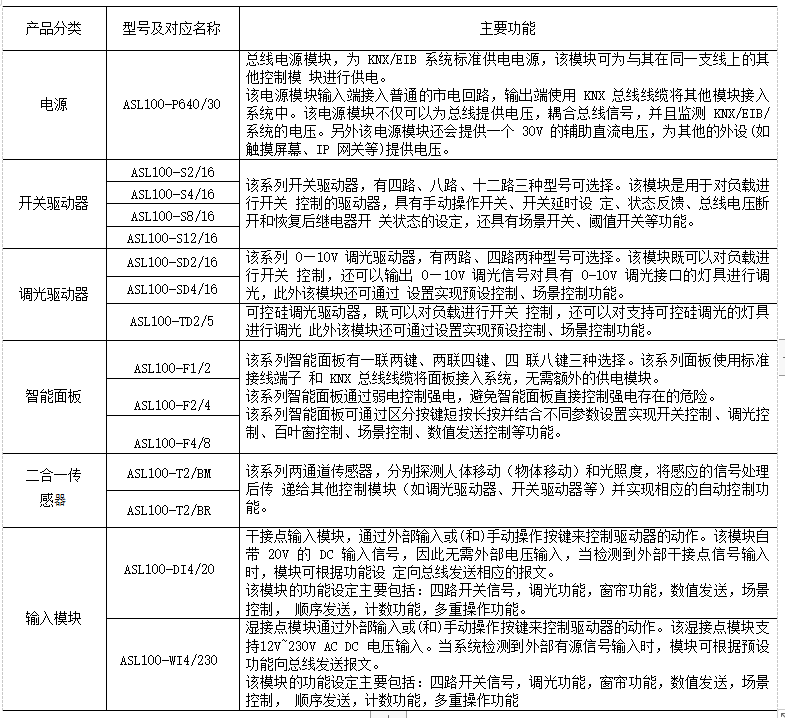文章目录
- 堆
- Trie树
- 练习-用go中的list与map实现LRU算法
- 练习-用go语言中的map和堆实现超时缓存
堆
堆是一棵二叉树。大根堆即任意节点的值都大于等于其子节点。反之为小根堆。
用数组来表示堆,下标为 i 的结点的父结点下标为(i-1)/2,其左右子结点分别为 (2i + 1)、(2i + 2)。

构建堆
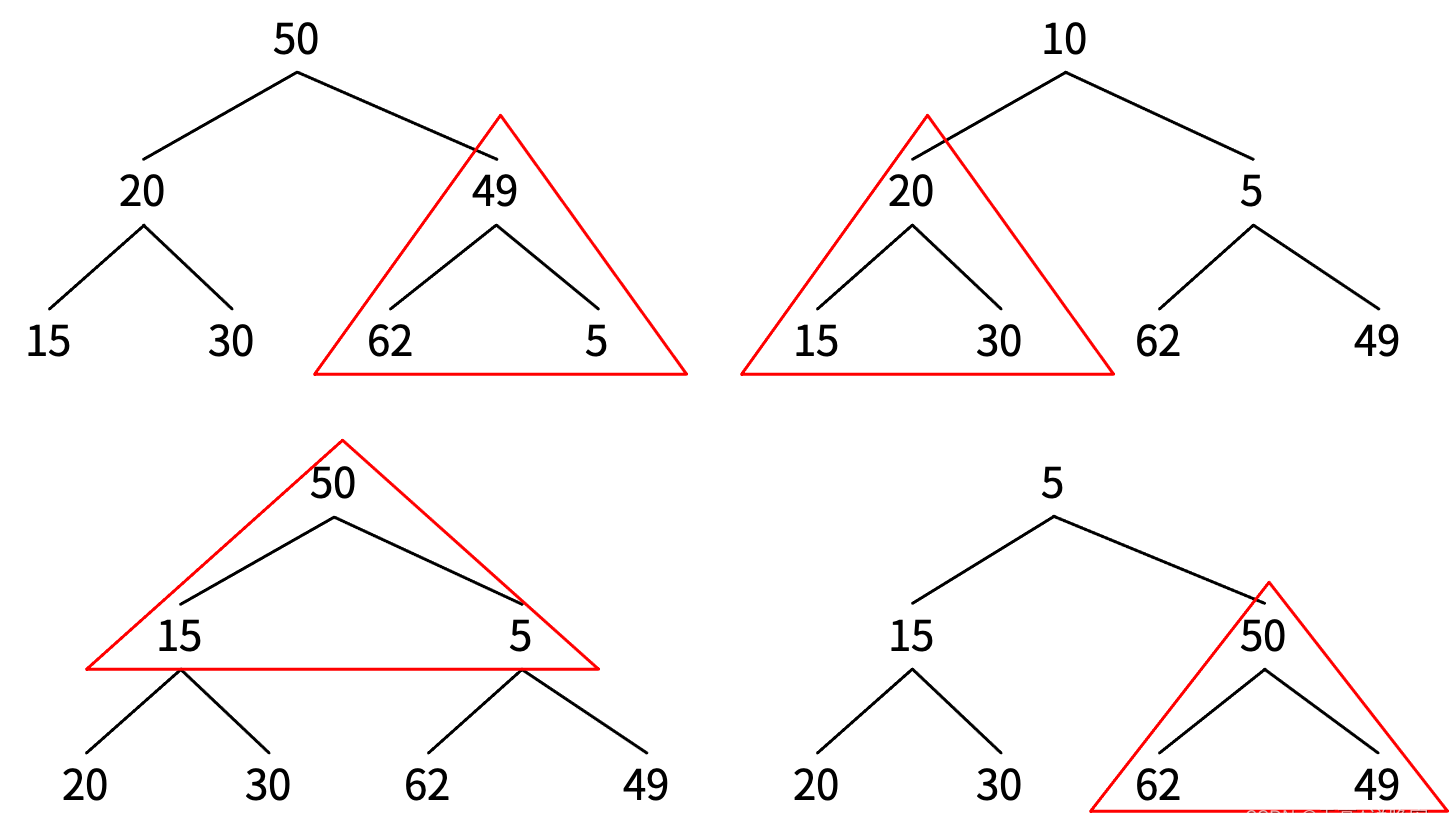
package mainimport "fmt"//AdjustTraingle 如果只是修改slice里的元素,不需要传slice的指针;如果要往slice里append或让slice指向新的子切片,则需要传slice指针
func AdjustTraingle(arr []int, parent int) {left := 2*parent + 1if left >= len(arr) {return}right := 2*parent + 2minIndex := parentminValue := arr[minIndex]if arr[left] < minValue {minValue = arr[left]minIndex = left}if right < len(arr) {if arr[right] < minValue {minValue = arr[right]minIndex = right}}if minIndex != parent {arr[minIndex], arr[parent] = arr[parent], arr[minIndex]AdjustTraingle(arr, minIndex) //递归。每当有元素调整下来时,要对以它为父节点的三角形区域进行调整}
}func ReverseAdjust(arr []int) {n := len(arr)if n <= 1 {return}lastIndex := n / 2 * 2fmt.Println(lastIndex)for i := lastIndex; i > 0; i -= 2 { //逆序检查每一个三角形区域right := iparent := (right - 1) / 2fmt.Println(parent)AdjustTraingle(arr, parent)}
}func buildHeap() {arr := []int{62, 40, 20, 30, 15, 10, 49}ReverseAdjust(arr)fmt.Println(arr)
}
每当有元素调整下来时,要对以它为父节点的三角形区域进行调整。
插入元素
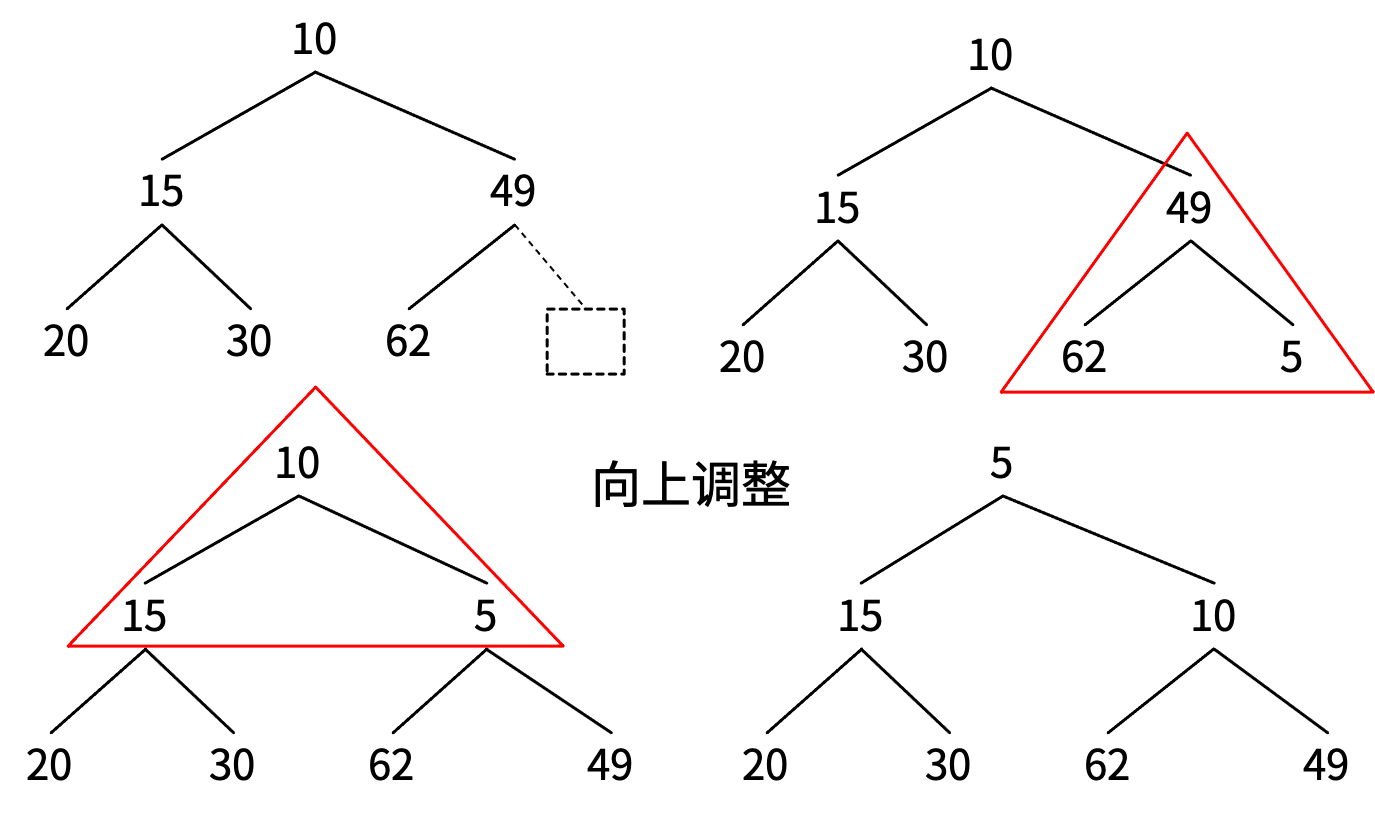
删除堆顶
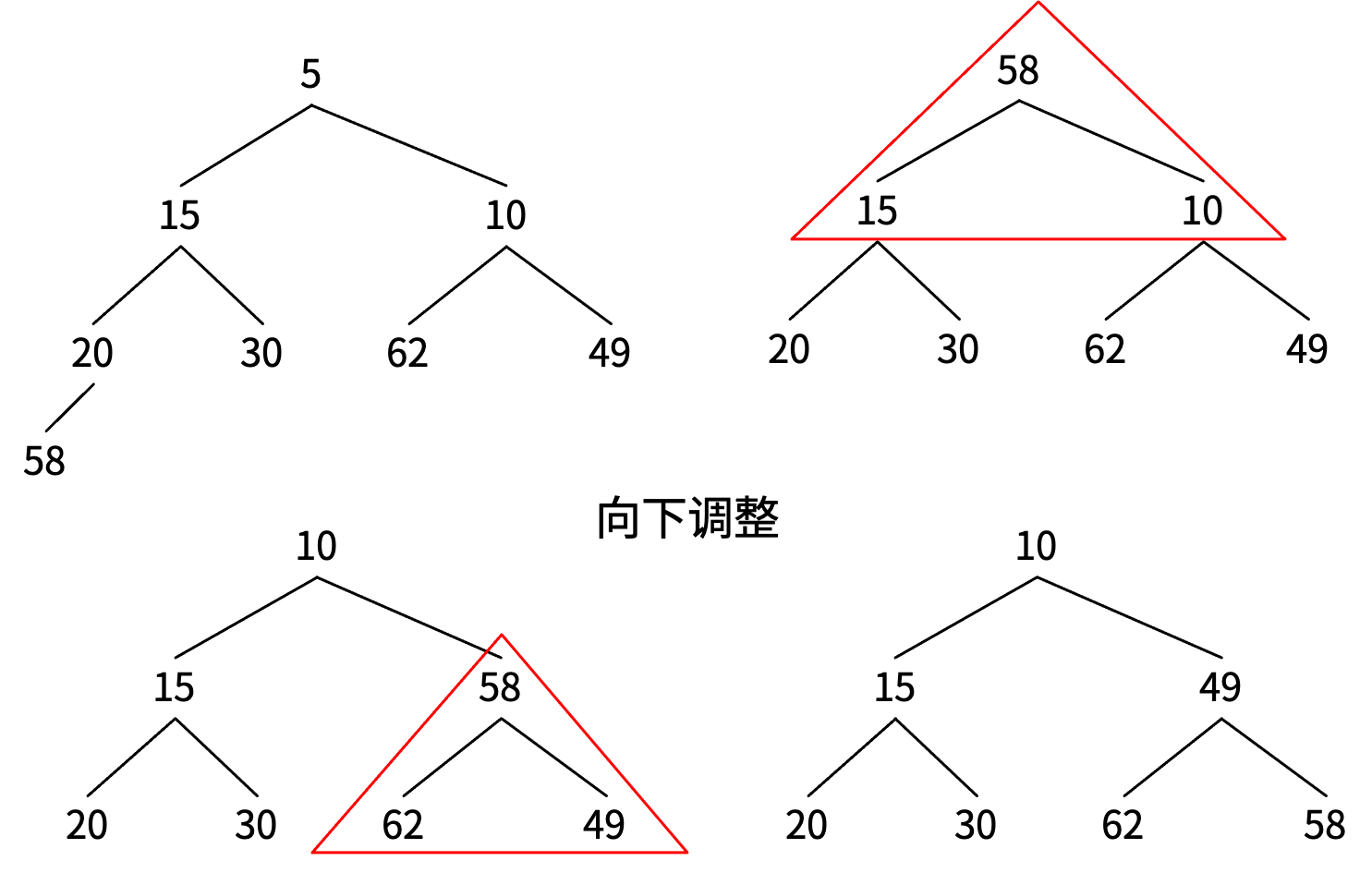
下面讲几个堆的应用。
堆排序
- 构建堆O(N)。
- 不断地删除堆顶O(NlogN)。
求集合中最大的K个元素
- 用集合的前K个元素构建小根堆。
- 逐一遍历集合的其他元素,如果比堆顶小直接丢弃;否则替换掉堆顶,然后向下调整堆。
把超时的元素从缓存中删除
- 按key的到期时间把key插入小根堆中。
- 周期扫描堆顶元素,如果它的到期时间早于当前时刻,则从堆和缓存中删除,然后向下调整堆。
golang中的container/heap实现了小根堆,但需要自己定义一个类,实现以下接口:
- Len() int
- Less(i, j int) bool
- Swap(i, j int)
- Push(x interface{})
- Pop() x interface{}
type Item struct {Value stringpriority int //优先级,数字越大,优先级越高
}type PriorityQueue []*Itemfunc (pq PriorityQueue) Len() int {return len(pq)
}func (pq PriorityQueue) Less(i, j int) bool {return pq[i].priority > pq[j].priority //golang默认提供的是小根堆,而优先队列是大根堆,所以这里要反着定义Less。定义的是大根堆
}func (pq PriorityQueue) Swap(i, j int) {pq[i], pq[j] = pq[j], pq[i]
}//往slice里append,需要传slice指针
func (pq *PriorityQueue) Push(x interface{}) {item := x.(*Item)*pq = append(*pq, item)
}//让slice指向新的子切片,需要传slice指针
func (pq *PriorityQueue) Pop() interface{} {old := *pqn := len(old)item := old[n-1] //数组最后一个元素*pq = old[0 : n-1] //去掉最一个元素return item
}
func testPriorityQueue() {pq := make(PriorityQueue, 0, 10)pq.Push(&Item{"A", 3})pq.Push(&Item{"B", 2})pq.Push(&Item{"C", 4})heap.Init(&pq)heap.Push(&pq, &Item{"D", 6})for pq.Len() > 0 {fmt.Println(heap.Pop(&pq))}
}
//&{D 6}
//&{C 4}
//&{A 3}
//&{B 2}
Trie树
trie树又叫字典权。
现有term集合:{分散,分散精力,分散投资,分布式,工程,工程师},把它们放到Trie树里如下图:
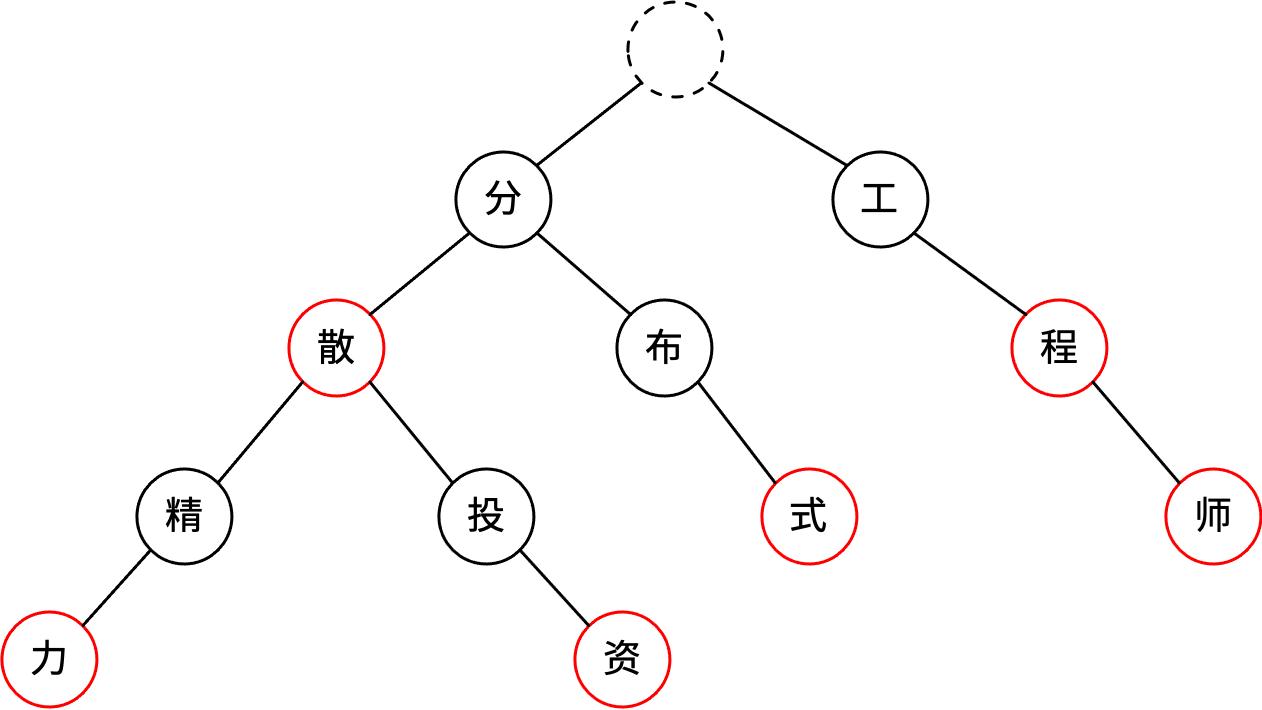
Trie树的根节点是总入口,不存储字符。对于英文,第个节点有26个子节点,子节点可以存到数组里;中文由于汉字很多,用数组存子节点太浪费内存,可以用map存子节点。从根节点到叶节点的完整路径是一个term。从根节点到某个中间节点也可能是一个term,即一个term可能是另一个term的前缀。上图中红圈表示从根节点到本节点是一个完整的term。
package mainimport "fmt"type TrieNode struct {Word rune //当前节点存储的字符。byte只能表示英文字符,rune可以表示任意字符Children map[rune]*TrieNode //孩子节点,用一个map存储Term string
}type TrieTree struct {root *TrieNode
}//add 把words[beginIndex:]插入到Trie树中
func (node *TrieNode) add(words []rune, term string, beginIndex int) {if beginIndex >= len(words) { //words已经遍历完了node.Term = termreturn}if node.Children == nil {node.Children = make(map[rune]*TrieNode)}word := words[beginIndex] //把这个word放到node的子节点中if child, exists := node.Children[word]; !exists {newNode := &TrieNode{Word: word}node.Children[word] = newNodenewNode.add(words, term, beginIndex+1) //递归} else {child.add(words, term, beginIndex+1) //递归}
}//walk words[0]就是当前节点上存储的字符,按照words的指引顺着树往下走,最终返回words最后一个字符对应的节点
func (node *TrieNode) walk(words []rune, beginIndex int) *TrieNode {if beginIndex == len(words)-1 {return node}beginIndex += 1word := words[beginIndex]if child, exists := node.Children[word]; exists {return child.walk(words, beginIndex)} else {return nil}
}//traverseTerms 遍历一个node下面所有的term。注意要传数组的指针,才能真正修改这个数组
func (node *TrieNode) traverseTerms(terms *[]string) {if len(node.Term) > 0 {*terms = append(*terms, node.Term)}for _, child := range node.Children {child.traverseTerms(terms)}
}func (tree *TrieTree) AddTerm(term string) {if len(term) <= 1 {return}words := []rune(term)if tree.root == nil {tree.root = new(TrieNode)}tree.root.add(words, term, 0)
}func (tree *TrieTree) Retrieve(prefix string) []string {if tree.root == nil || len(tree.root.Children) == 0 {return nil}words := []rune(prefix)firstWord := words[0]if child, exists := tree.root.Children[firstWord]; exists {end := child.walk(words, 0)if end == nil {return nil} else {terms := make([]string, 0, 100)end.traverseTerms(&terms)return terms}} else {return nil}
}func main() {tree := new(TrieTree)tree.AddTerm("分散")tree.AddTerm("分散精力")tree.AddTerm("分散投资")tree.AddTerm("分布式")tree.AddTerm("工程")tree.AddTerm("工程师")terms := tree.Retrieve("分散")fmt.Println(terms)terms = tree.Retrieve("人工")fmt.Println(terms)
}
练习-用go中的list与map实现LRU算法
type LRUCache struct {cache map[int]intlst list.ListCap int // 缓存容量上限
}func NewLRUCache(cap int) *LRUCache {lru := new(LRUCache)lru.Cap = caplru.cache = make(map[int]int, cap)lru.lst = list.List{}return lru
}func (lru *LRUCache) Add(key, value int) {if len(lru.cache) < lru.Cap { //还未达到缓存的上限// 直接把key value放到缓存中lru.cache[key] = valuelru.lst.PushFront(key)} else { // 缓存已满// 先从缓存中淘汰一个元素back := lru.lst.Back()delete(lru.cache, back.Value.(int))lru.lst.Remove(back)// 把key value放到缓存中lru.cache[key] = valuelru.lst.PushFront(key)}
}func (lru *LRUCache) find(key int) *list.Element {if lru.lst.Len() == 0 {return nil}head := lru.lst.Front()for {if head == nil {break}if head.Value.(int) == key {return head} else {head = head.Next()}}return nil
}func (lru *LRUCache) Get(key int) (int, bool) {value, exists := lru.cache[key]ele := lru.find(key)if ele != nil {lru.lst.MoveToFront(ele)}return value, exists
}func testLRU() {lru := NewLRUCache(10)for i := 0; i < 10; i++ {lru.Add(i, i) // 9 8 7 6 5 4 3 2 1 0}for i := 0; i < 10; i += 2 {lru.Get(i) // 8 6 4 2 0 9 7 5 3 1}for i := 10; i < 15; i++ {lru.Add(i, i) //14 13 12 11 10 8 6 4 2 0}for i := 0; i < 15; i += 3 {_, exists := lru.Get(i)fmt.Printf("key %d exists %t\n", i, exists)}
}
练习-用go语言中的map和堆实现超时缓存
type HeapNode struct {value int //对应到map里的keydeadline int //到期时间戳,精确到秒
}type Heap []*HeapNodefunc (heap Heap) Len() int {return len(heap)
}
func (heap Heap) Less(i, j int) bool {return heap[i].deadline < heap[j].deadline
}
func (heap Heap) Swap(i, j int) {heap[i], heap[j] = heap[j], heap[i]
}
func (heap *Heap) Push(x interface{}) {node := x.(*HeapNode)*heap = append(*heap, node)
}
func (heap *Heap) Pop() (x interface{}) {n := len(*heap)last := (*heap)[n-1]//删除最后一个元素*heap = (*heap)[0 : n-1]return last //返回最后一个元素
}type TimeoutCache struct {cache map[int]interface{}hp Heap
}func NewTimeoutCache(cap int) *TimeoutCache {tc := new(TimeoutCache)tc.cache = make(map[int]interface{}, cap)tc.hp = make(Heap, 0, 10)heap.Init(&tc.hp) //包装升级,从一个常规的slice升级为堆return tc
}func (tc *TimeoutCache) Add(key int, value interface{}, life int) {//直接把key value放入maptc.cache[key] = value//计算出deadline,然后把key和deadline放入堆deadline := int(time.Now().Unix()) + lifenode := &HeapNode{value: key, deadline: deadline}heap.Push(&tc.hp, node)
}func (tc TimeoutCache) Get(key int) (interface{}, bool) {value, exists := tc.cache[key]return value, exists
}func (tc *TimeoutCache) taotai() {for {if tc.hp.Len() == 0 {time.Sleep(100 * time.Millisecond)continue}now := int(time.Now().Unix())top := tc.hp[0]if top.deadline < now {heap.Pop(&tc.hp)delete(tc.cache, top.value)} else { //堆顶还没有到期time.Sleep(100 * time.Millisecond)}}
}func testTimeoutCache() {tc := NewTimeoutCache(10)go tc.taotai() //在子协程里面去执行,不影响主协程继续往后走tc.Add(1, "1", 1)tc.Add(2, "2", 3)tc.Add(3, "3", 4)time.Sleep(2 * time.Second)for _, key := range []int{1, 2, 3} {_, exists := tc.Get(key)fmt.Printf("key %d exists %t\n", key, exists) //1不存在,2 3还存在}
}



